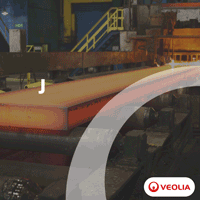Energy Department Investments to Develop Lighter, Stronger Materials for Greater Vehicle Fuel Economy
08/14/2012 - U.S. Energy Secretary Steven Chu announced seven new projects to accelerate the development and deployment of stronger and lighter materials for the next generation of American-made cars and trucks.
As part of the Obama Administration’s all-of-the-above energy strategy to reduce the United States’ reliance on foreign oil and save drivers money at the pump, U.S. Energy Secretary Steven Chu announced seven new projects to accelerate the development and deployment of stronger and lighter materials for the next generation of American-made cars and trucks. These projects include the development and validation of modeling tools to deliver higher performing carbon fiber composites and advanced steels, as well as research into new lightweight, high-strength alloys for energy-efficient vehicle and truck engines.
"With strong, lightweight materials we have an opportunity to dramatically increase vehicle fuel economy, while helping America maintain its competitive edge in automotive design and manufacturing," said Secretary Chu. "Today’s investment in new lightweight materials builds on the Obama Administration’s historic fuel economy standards that are already helping drivers save money at the pump."
The Obama Administration has taken unprecedented steps to improve the fuel efficiency of American vehicles, reaching historic agreements to improve fuel economy standards for passenger cars and light-duty trucks through Model Year 2025. These standards are expected to save consumers $1.7 trillion at the pump, or about $8,200 in costs over the lifetime of each vehicle. In fact, the initial set of standards for Model Years 2011 to 2016 is already having an impact for American families and businesses. The Energy Information Administration estimates model year 2011 cars achieved record average fuel economy at 34.4 miles per gallon, representing a 2 percent increase over 2010 model year cars.
Achieving the goals of this historic agreement will rely on innovative technologies and manufacturing that will spur economic growth and create high-quality domestic jobs in cutting edge industries across America. The projects announced today will help provide additional technologies and innovations that will enable manufacturers to continue to improve vehicle fuel efficiency beyond the regulated levels. Advanced materials are essential for boosting the fuel economy of cars and trucks while maintaining and improving safety and performance. Replacing cast iron and traditional steel components with lightweight materials – including advanced high-strength steel, magnesium, aluminum, and carbon fiber composites – allows vehicle manufacturers to include additional safety devices, integrated electronic systems and emissions control equipment on vehicles without increasing their weight. Using lighter materials also reduces a vehicle’s fuel consumption. Reducing a vehicle’s weight by just 10 percent can improve the fuel economy by 6 to 8 percent.
The new investments announced today support materials innovation in two critical areas:
Improving Carbon Fiber Composites and Advanced Steel through Computational Design
The Energy Department will award two projects to validate existing modeling tools to optimize the performance and cost-effectiveness of carbon fiber and other specialized composite materials for vehicle body, chassis and interior uses. For example, Pacific Northwest National Laboratory, based in Richland, Wash., is receiving a $1 million investment to validate carbon fiber composite models.
Additionally, the Department is investing $6 million to develop new modeling tools to advance third-generation high-strength steels. Through this project, Detroit-based United States Automotive Materials Partnership will leverage an additional $2.5 million in private investment to help create modeling tools for deploying high-strength steels for lighter passenger vehicles.
Advanced Alloy Development for Automotive and Heavy-Duty Engines
Today’s investment also includes four project that will develop lightweight, high-strength alloys for automotive and heavy duty engine blocks and cylinder heads. For instance, Caterpillar Inc, based near Peoria, Ill., is leveraging a $3.4 million Energy Department award, as well as $1.5 million in private investment, to develop high-strength iron-based alloys to allow for higher cylinder pressures and increased engine efficiency.
Read the full list of awards at www.eere.energy.gov/pdfs/vtp_materials_selection.pdf.
The Energy Department will provide $8 million this year for these awards, and has requested an additional $13.75 million next year, subject to congressional appropriations, to support the completion of these projects over the next two to four years. The Department’s investments are leveraging an additional $11 million from the private sector. These projects support the Materials Genome Initiative, an ambitious effort announced by President Obama to double the speed and cut the cost of discovering, developing, and deploying new high-tech materials in the United States.
From developing stronger, safer and lighter materials for today’s automobiles, to lowering the costs of electric vehicle batteries and better combustion engines, the Energy Department has supported a range of technological advances in vehicle efficiency that has helped maintain America’s competitive edge in this global industry.



-(220-x-200-px)-(130-x-130-px)-(220-x-200-px).jpg?lang=en-US&ext=.jpg)
.gif?width=200&height=200&mediaprotectionhash=ddb07947ad3b4ab959a83714461eccd5c6895f370695eb035a9ff7aa736f8ad9&ext=.gif)





